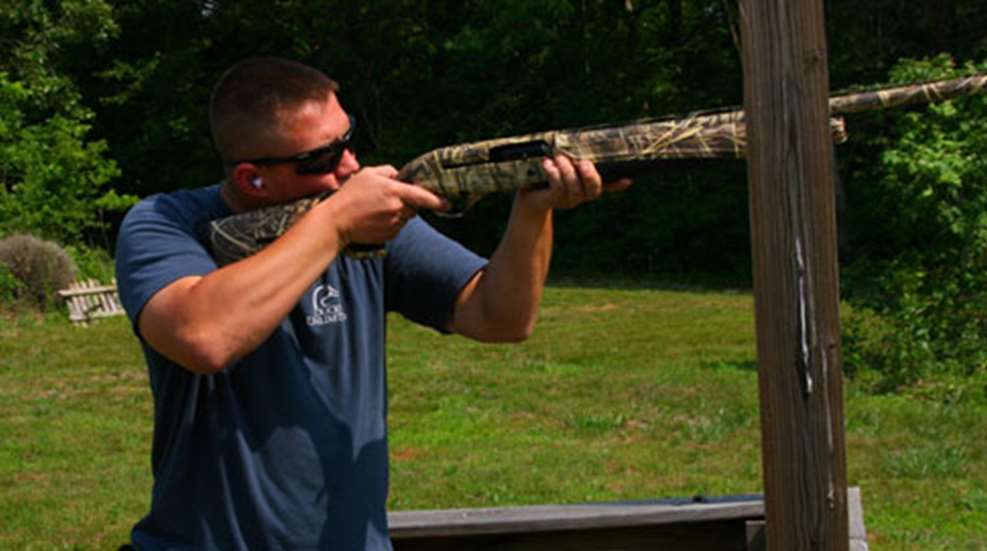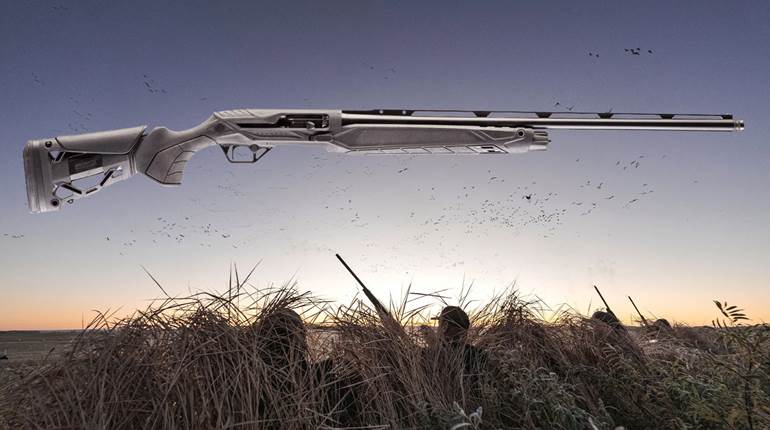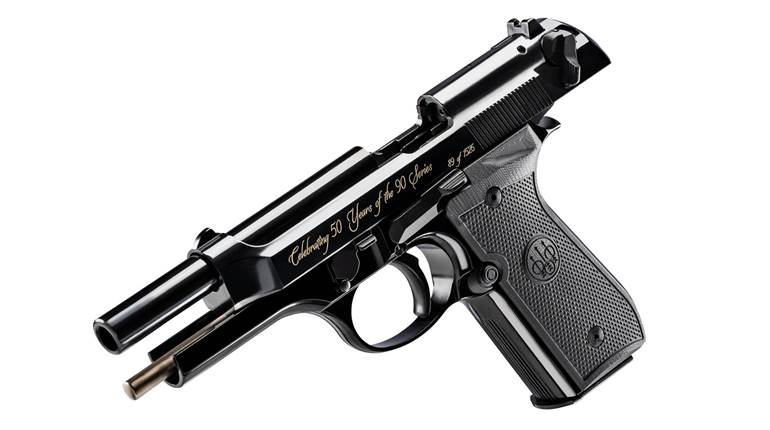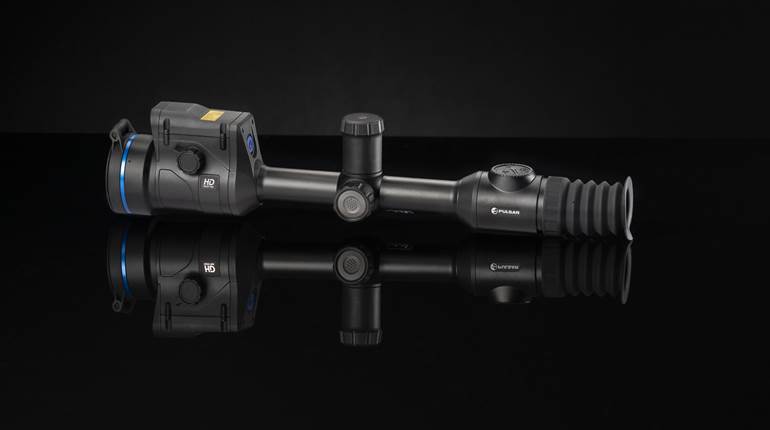
7/31/2012
I wasn’t in the market for a new shotgun when I received this assignment. The shotgun I had been using suited me just fine. I had some issues, not so much with the shotgun, rather with me being unable to hit anything with it. Everything I aimed at seemed to be safe, such as clay pigeons, ducks, even a big mature stationary turkey, yet I was determined to stick with my shotgun and even more determined to start shooting it well.
When the Beretta A400 Xtreme arrived I shouldered it. It came up smooth and natural. Although I was sure several misses were waiting for me, I liked how the shotgun felt. I made a call to line up a morning of sporting clays.
A hot and sticky Missouri morning found my shooting partner and me ready to try out this new modern marvel. After a half dozen tries without connecting on a bird he handed me the shotgun and headed to the truck for his own.
I took my place in the station and called for the first bird, which kept flying until gravity took hold. The bird broke, but I had nothing to do with it. I called for bird number two, remembering this wasn’t a flat-ribbed shotgun. I held what looked to be the proper lead and slapped the trigger. My reward was a puff of orange dust.
European shotguns are designed to be held under the target. This makes shooting and hitting much easier than obscuring the target with an American flat-ribbed shotgun, which sometimes happens in a hurried shot and results in nothing more than poking a hole in the sky. It’s much easier to hit a target you can see than one you can’t.
That morning, I hit as many birds as I missed, which is pretty good for me, especially considering I was using a brand new shotgun.
The shotgun fit me very well. I’ve always held the opinion that a shotgun should shoulder and fit as though it was an extension of your body, with movement being an unconscious fluid motion. This shotgun does just that. It lacks the balance and grace of a fine double gun, but it points well. I confirmed this by setting up milk jugs at various ranges and firing the shotgun from the hip at the water filled jugs. I have tested numerous shotguns and to date only the Xtreme has racked up a perfect score during my point and shoot.
Like earlier models, the A400 Xtreme operated effortlessly and without a hiccup. I fed it a diet of 2 3/4 inch, 7/8-ounce target loads, 3-inch field loads and even 3 1/2-inch turkey loads. Seldom do I use a semi-auto for anything but turkey and waterfowl; the ammunition of choice for both of these pursuits being the ever punishing 3 1/2 inch. The Xtreme features several recoil-reducing features, such as the Kick-Off MEGA or “M” for short and the Kick-Off 3 recoil-reducing system to help take away some of the punishment.
The M is a hydraulic dampening system, which according to Beretta reduces axial movement—the recoil that causes a stock to bruise the cheek after firing a few volleys. The Kick-Off 3 addresses recoil from a new point of view.
In laboratory tests, recoil from a semi-auto shotgun has two distinct peaks. The first is upon firing, while the second is the impact of the bolt against the back of the receiver. The Kick–Off 3 is a hydraulic damper that reduces this second peak, and decreases the wear and tear of the shotgun according to Beretta. The complete system installed inside the stock does a decent job of reducing perceived recoil. The manufacturer claims a reduction of 70 percent; however, only so much can be done with a 3 1/2- inch turkey load. I didn’t measure the recoil, but I can attest that target loads from the bench did seem to kick less, though there was a ringing from inside the stock against my cheek.
The Xtreme is available with 26-, 28- and 30-inch barrels; the test gun I received sported a 28-inch barrel, which swung well and was very responsive. It is also equipped with a synthetic stock complete with rubber inserts to help grip the stock and forearm.
Of course, the Blink gas-operating system is the heart of the new Xtreme, with claims of it being 36 percent faster than other semi-auto shotguns. The system features a rotating bolt, with a new feeding system and a self-cleaning piston to ensure the shotgun operates in all conditions.
Field stripping for cleaning is simple and after two rounds of sporting clays, the shotgun barely looked as if it had been fired.
The Xtreme is also equipped with a cartridge cut-off, which is a touted feature that I have never used in the field. The trigger group is ergo-friendly with the safety in the front of the trigger guard, and the shotgun comes with three Optima choke tubes that screw in and out easily. The Xtreme also comes with a three-shot adapter, a stock extension and cast washers to give the shooter some control of cast over his or her stock dimensions.
Is it a winner? I think Beretta has again offered a good product at a reasonable price. And now that I have grown accustomed to it and I have begun shooting it better than my old shotgun, the dilemma weighs, keep it or return it?
Manufacturer: Fabbrica d’ Armi Pietro Beretta S.p.A. Brescia , Italy
Importer: Beretta USA; (301)283-2191; www.berettausa.com
Model: A400 Xtreme Unico
Action Type: Semi-automatic, gas operated shotgun
Gauge: 12, 2¾”, 3” and 3 ½”
Receiver: Aluminum alloy
Barrel: Black matte, Max-4 Realtree (tested) Gore Optifade Marsh, 26”, 28” (tested) and 30” ventilated rib
Chokes: Optima-Choke H-P interchangeable, screw-in chokes; cylinder, modified and full.
Magazine: tubular, four-round capacity , three shot adapter provided (2+1)
Overall length: 49 3/8" (28" barrel)
Weight: 7 lbs., 11 ozs. (as tested)
Trigger Pull: single-stage; 5 lbs., 3 oz.
Stock: Synthetic pistol grip (adjustable shim system provided): length of pull, 14 1/2"; drop at comb, 1½"; drop at heel, 2 ½"
Accessories: dedicated case, stock drop spacers, improved cylinder and modified and full chokes; choke tube wrench; owner’s manual, quick detachable swivels, Beretta oil
Suggested Retail Price: $1,659





































